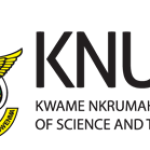Research methods play a vital role in academic studies, enabling students to acquire essential skills…
Excel in Computer Science: 30 Sample Questions for KNUST Undergraduate Students
Introduction:
Computer Science is a dynamic and rapidly evolving field that requires a solid understanding of core concepts and problem-solving skills. For students currently pursuing a Computer Science degree at Kwame Nkrumah University of Science and Technology (KNUST), practicing with past questions is essential for exam preparation. In this blog post, we present 30 past Computer Science questions likely to be used at the undergraduate level at KNUST. Let’s dive into these examples and explore the guidelines for effective preparation.
I. Programming Concepts and Algorithms:
1. Write a Python program to find the factorial of a given number.
2. Implement a binary search algorithm in Java.
3. Discuss the difference between recursion and iteration in programming.
4. Explain the concept of Big O notation and its significance in algorithm analysis.
5. Write a C++ program to sort an array using the bubble sort algorithm.
6. Describe the process of implementing a linked list data structure in Python.
7. Explain the concept of dynamic programming and provide an example of its application.
II. Data Structures and Algorithms:
8. Compare and contrast arrays and linked lists in terms of their advantages and disadvantages.
9. Discuss the basic operations and time complexities of a stack data structure.
10. Implement a depth-first search (DFS) algorithm in a graph data structure.
11. Explain the concept of a priority queue and its application in Dijkstra’s algorithm.
12. Describe the process of implementing a binary search tree in Java.
13. Discuss the difference between breadth-first search (BFS) and depth-first search (DFS).
III. Database Systems and SQL:
14. Write an SQL query to retrieve all students with a GPA above 3.5.
15. Explain the ACID properties in database transactions and their importance.
16. Discuss the advantages and disadvantages of relational database management systems (RDBMS).
17. Design a database schema for a library management system.
18. Write an SQL query to calculate the average salary of employees in a department.
IV. Operating Systems and Networks:
19. Describe the role of an operating system in managing hardware resources.
20. Explain the concept of virtual memory and its benefits.
21. Discuss the layers of the TCP/IP protocol stack and their functions.
22. Compare and contrast IPv4 and IPv6 addressing schemes.
V. Software Engineering and System Design:
23. Describe the stages of the software development life cycle (SDLC).
24. Explain the concept of object-oriented programming (OOP) and its advantages.
25. Discuss the principles of user interface (UI) design in software development.
26. Describe the process of conducting unit testing in software engineering.
VI. Artificial Intelligence and Machine Learning:
27. Explain the concept of supervised learning and provide an example.
28. Discuss the difference between classification and regression algorithms in machine learning.
29. Describe the process of training a neural network using backpropagation.
30. Discuss the ethical considerations in the use of artificial intelligence.
Guidelines for Effective Preparation:
1. Review your lecture notes and recommended textbooks to strengthen your understanding of core concepts.
2. Practice coding regularly by implementing algorithms and solving programming problems.
3. Use online platforms and resources to access additional coding challenges and practice exercises.
4. Collaborate with classmates and participate in group discussions and coding sessions.
5. Seek guidance from your professors, teaching assistants, or seniors for clarification on challenging topics.
6. Allocate dedicated study time to review each subject area and focus on areas where you need improvement.
7. Stay up to date with emerging trends and technologies in Computer Science through online resources and professional communities.
Conclusion:
Preparing for Computer Science exams at KNUST requires a combination of conceptual understanding and practical problem-solving skills. By practicing with sample questions, strengthening your knowledge of programming concepts, data structures, algorithms, databases, operating systems, and software engineering principles, you can excel in your studies. Follow the guidelines provided, invest time in practice, and seek assistance when needed to enhance your performance. Remember, a strong foundation in Computer Science will empower you to thrive in your academic journey and contribute to the ever-evolving world of technology.






